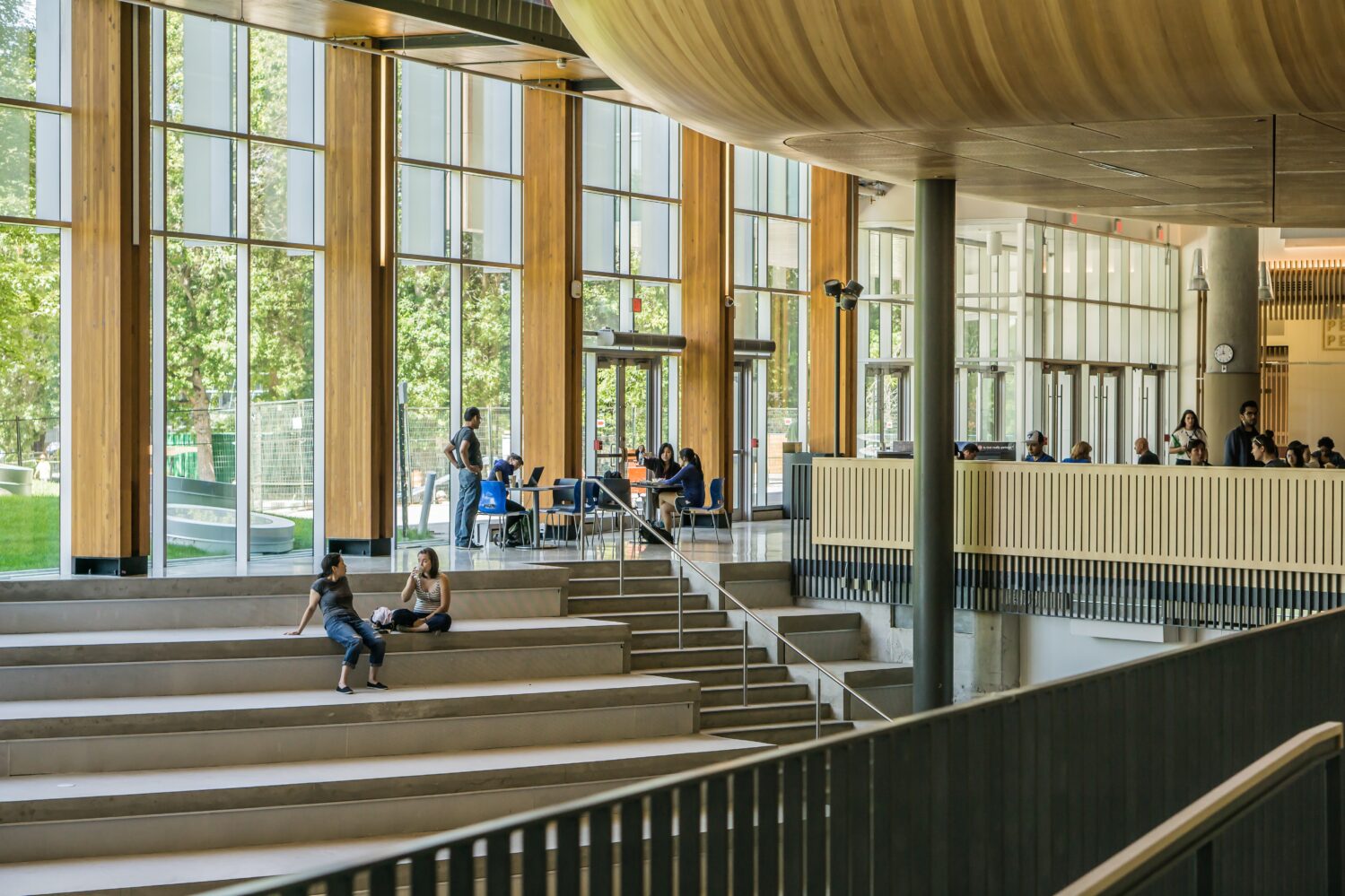This article by Service Works Global’s Marketing Director, Hazel Bedson, also featured in the October 2022 edition of FMJ magazine.
The last few years have seen a surge in awareness and support around environmental change. COP26 last year was a huge global event, and since then we have all felt the impact of climate change on a local level through the summer heatwaves in the UK.
A BCG report found that respondents from numerous countries are more environmentally aware since the outset of the pandemic, with the younger generations leading the charge.
As more members of Generation Z enter adulthood, their environmental concerns need to be listened to in order for businesses of all kinds to win over their support. That might mean businesses need a strong ESG strategy to attract talent or need to demonstrate sustainability to appeal to customers.
Sustainability in Higher Education
Universities and colleges are one of the first real official public bodies that young people encounter, and they are not afraid to speak their minds about them. A study by the Times Higher Education found that a university’s sustainability policy and work is more important than location for mobile students.
Additionally, a study by the National Union of Students found that over 60 per cent of students want to learn more about sustainability at university, with 87 per cent of all students agreeing that their university should take sustainability more seriously.
It’s generally accepted that the built environment accounts for around 40 per cent of greenhouse gas emissions, and that this is set to double by 2050.
Higher education estates make up a significant percentage of the built environment. There are around 164 universities and higher education institutions in the UK alone. Many of these establishments have numerous sites and sometimes hundreds of buildings. The University of Edinburgh, for example, has 458 buildings across seven sites.
Not only does the higher education sector have a great opportunity to make a positive difference but having a clear sustainability policy and delivering may be critical for continuing to attract students in a highly competitive market.
How FM can Support Sustainability in the Higher Education Sector
There are many services and ways that FM can provide greater sustainable practices to an education estate. The use of technology is particularly important, primarily through the use of computer aided facilities management (CAFM) systems.
As already noted, school and university campuses host a range of large buildings with various needs depending on their use. For example, there are accommodation buildings that require specialist health and safety, or science labs that may need specific alarms and ventilation, and all buildings will need specialist fire doors.
These buildings all have different energy uses, too. Some buildings may only be in operation during core work hours of 9 – 5; others, like libraries, may be in use 24 hours every day of the week.
All of these factors require different sets of paperwork, staff time, management and reporting, which can be hugely time-consuming and not very cost-effective.
CAFM helps to solve these demands by streamlining all asset, building and maintenance activities. By using a CAFM system, universities are able to control the scheduling and allocation of maintenance for the many assets located across the educational campus, ensuring all areas are always available for students. Similarly, when managing the estate as a whole, intelligent data supplied by an effective CAFM system is able to help a university to identify any underperforming or inefficient assets and replace them with those that will improve energy and reduce emissions.
Integration with third-party tools, such as sensors or BMS (Building Management Systems) enable data from multiple sources to be captured and analysed to inform actionable insights around sustainability. For example, input from sensors enable FM teams to turn off lights and heating in buildings that are unoccupied in order to save energy and minimise their carbon output.
Efficiencies gained can offer a rapid ROI, while changes made for sustainability reasons can be shared with students and employees alike.
Universities are renowned for sharing best practice and it always pays to learn from what others are doing around the world. Here are a couple of case studies that show how our CAFM solution, QFM, and other technology has supported higher education estates around the world.
Best Practice from Around the World
Curtin University
Ranked in the top 1 per cent of universities worldwide, Curtin University supports 55,000 students at campuses in Australia, Dubai, Singapore, Mauritius, and Malaysia. It was awarded Australia’s first 5-star ‘Green Star-Communities’ rating from the Green Building Council of Australia (GBCA) and given a sixth star in 2020.
Perth is home to Curtin’s largest campus. Here, the university is seeking to transform the estate into a ‘City of Innovation’, with the first stage covering student accommodation, shops, a boutique hotel, commercial and residential space for lease, and public areas.
To support this, the site’s facilities management team required new CAFM software that could meet its current needs and scale alongside its ambitious growth plans. Currently, Curtin averages more than 25,000 reactive jobs raised per year. Given its ambitious growth plans, routing all requests through the help desk to then manually allocate and track each job was not a viable option.
Here, our QFM solution provided an integrated, mobile-enabled facilities and asset management system to streamline and automate end-to-end business processes for the operations and maintenance portfolio at Perth.
Maintenance workflows have been automated for reactive and planned jobs, with in-built prioritisation escalations helping to ensure the most urgent works are completed first.
Operational efficiencies and enhanced resource utilisation are helping Curtin to operate with a more effective and sustainable maintenance regime which minimises wastage and ensures the estate is well-maintained.
Well maintained assets use less energy, and Curtin has also been able to remove paper from its processes thanks to going digital – its QFM app contains 60 digital maintenance forms which FM staff use to manage jobs.
Bräckeskolan and Kålltorp, Sweden
The use of technology to achieve sustainability objectives extends far beyond the optimisation of FM on existing campuses.
The Bräckeskolan school in Gothenburg wanted to renovate and modernise its building, but the existing 2D building drawings were inaccurate as changes made to buildings over the years had not been properly recorded.
Through a process of laser scanning, we created a 3D building information model (BIM) model. This gave the architects a complete design model to work from, safe in the knowledge that all measurements and dimensions were accurate. In case there were any concerns, designers could take a virtual tour of the space and collect measurements themselves.
The adoption of BIM not only ensured a smooth project this time around, but has improved modelling so that all future works will be much more efficient.
In Kålltorp, we supported a student accommodation provider to deliver virtual tours to prospective students that were not able to visit the site in-person. This was through the use of visualisation technology that offered students a virtual tour of the space.
Students could explore the rooms, get a genuine feel for the size of the space and even plan on how they would decorate. The tours were such a hit that all 123 apartments were rented out without a single physical tour.
Not only did this offer an inclusive solution, but it’s great for sustainability too – the lack of physical travel can make a big dent in carbon output.
A Sustainable Future
Higher education institutions have always been known for being forward-thinking and innovative organisations. Now, they have a chance to be a leading sector in estate management and set an example that other industries can follow.
Many are already adhering to the 17 UN Sustainable Development Goals (SDGs) to help them embed social, environmental, and economic practices into their operations and their teachings as a strategic priority.
Some universities have started offering carbon literacy training courses in order to teach students and staff ways to live and work more sustainably. Others, as we have seen, are adopting technology to increase efficiencies in estate management and construction projects.
The learning here is that achieving genuine sustainability success requires a multifaceted approach and collaboration between multiple teams. From the FM side, access to accurate information and insights is critical. It leads to immediate improvements in efficiency, as well as a treasure trove of insights that deliver measurable ROI.
It’s a programme that may take time to develop and implement, but the benefits are clear. First and foremost, change is necessary to reduce carbon output and its impact on climate change. Secondly, with the well-publicised predicted rise in energy costs, minimising utility bills across the university estate will be a major budgetary concern. Beyond that, universities may struggle to compete if students continue to place such a high priority on environmental factors.
We’ve seen some great examples of how institutions from around the world have enhanced sustainability through the power of CAFM and BIM. Hopefully, more will follow suit and set the sector as a standard bearer for environmental achievements.








